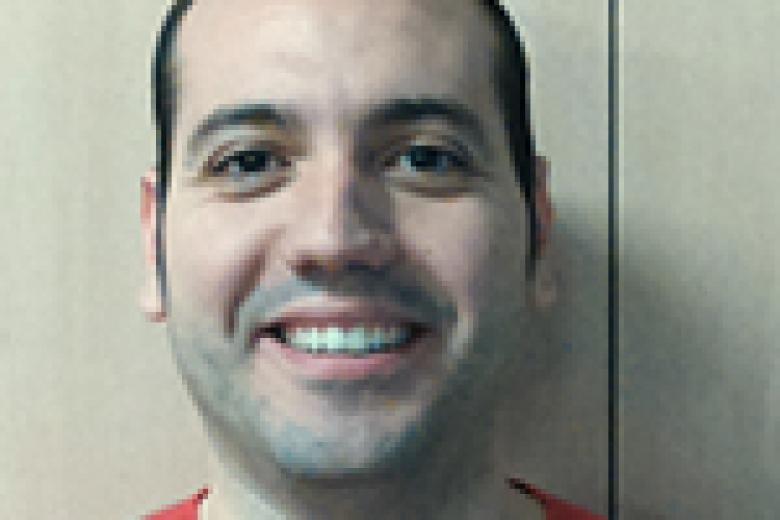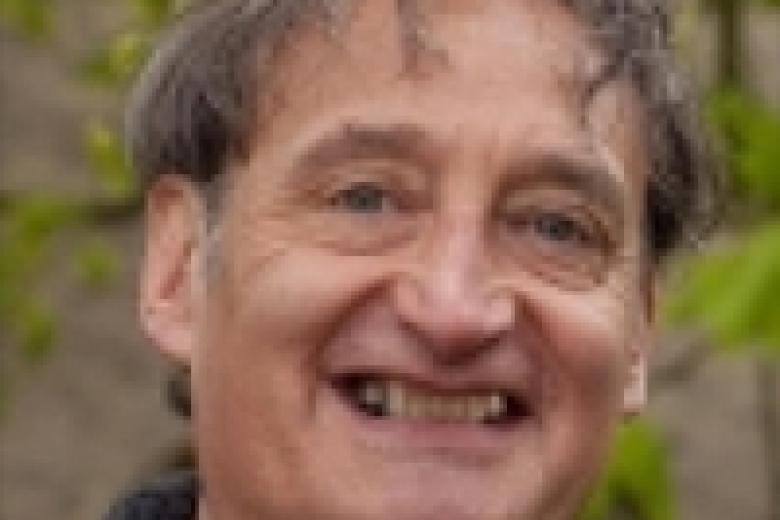Signals, Complex Systems and Images (SCSI)
Mathematically describing the situations that generate signals, helps to make the most of their data. Research within SCSI focusses on developing new techniques to analyze signals, images and systems, and develops ways to describe (signal-generating) systems mathematically.
This is an old research theme of the Department of Data Science and Knowledge Engineering (DKE). DKE has become the Department of Advanced Computing Sciences.
There is no shortage of signals in the world. For instance, signals may come from nature, such as your own body or outer space. Signals can also be generated artificially, for example for use in communication technologies. Systems are equally commonplace: they are real-world situations or objects that may be described as a collection of mathematical equations.
The SCSI theme specifically focuses on techniques to analyze systems that generate signals (‘model-based signal analysis’). Such approaches may help to find hidden signals in noisy data, to interpret signals generated by the body, or to develop methods to combine biological data. Another type of system of interest is one for which we can control the input signals. How can we influence those variables to change the outcome for the better? Research within the SCSI theme addresses those challenges – and many more – by developing techniques for data analysis and by mathematically describing systems.
Research focus and application
Besides fundamental research in the area of (model-based) signal and image analysis, SCSI studies its applications in various areas of science and technology, as well as health. These mainly include complex systems from systems biology, medicine, engineering, physics, and astronomy. SCSI has a special focus on results obtained e.g. in electrocardiographic Imaging (ECGI), medical imaging, mass spectrometry and physics.
Signals, Complex Systems and Images in practiceDr. Pietro Bonizzi discusses software that helps neurologists make sense of brain signals |
Researchers
Highlighted publications
- Bennis, F. C., Teeuwen, B., Zeiler, F. A., Elting, J. W., van der Naalt, J., Bonizzi, P., Delhaas, T., & Aries, M. J. (2020). Improving Prediction of Favourable Outcome After 6 Months in Patients with Severe Traumatic Brain Injury Using Physiological Cerebral Parameters in a Multivariable Logistic Regression Model. Neurocritical Care, 33(2), 542-551. https://doi.org/10.1007/s12028-020-00930-6
- Bonizzi, P., Meste, O., Zeemering, S., Karel, J., Lankveld, T., Crijns, H., Schotten, U., & Peeters, R. (2020). A novel framework for noninvasive analysis of short-term atrial activity dynamics during persistent atrial fibrillation. Medical & Biological Engineering & Computing, 58(9), 1933-1945. https://doi.org/10.1007/s11517-020-02190-0
- Bonizzi, P., Peeters, R., Zeemering, S., van Hunnik, A., Meste, O., & Karel, J. (2019). Detection of Spatio-Temporal Recurrent Patterns in Dynamical Systems. Frontiers in Applied Mathematics and Statistics, 5(36), 1-13. https://doi.org/10.3389/fams.2019.00036
- Bresolin, D., Collins, P., Geretti, L., Segala, R., Villa, T., & Zivanovic Gonzalez, S. (2020). A computable and compositional semantics for hybrid automata. In HSCC '20: Proceedings of the 23rd International Conference on Hybrid Systems: Computation and Control (pp. 1-11). [18] The Association for Computing Machinery. https://doi.org/10.1145/3365365.3382202
- Clerx, M., Heijman, J., Collins, P., & Volders, P. G. A. (2018). Predicting changes to I-Na from missense mutations in human SCN5A. Scientific Reports, 8(1), [12797]. https://doi.org/10.1038/s41598-018-30577-5
- Cluitmans, M., Karel, J., Bonizzi, P., Volders, P., Westra, R., & Peeters, R. (2018). Wavelet-promoted sparsity for non-invasive reconstruction of electrical activity of the heart. Medical & Biological Engineering & Computing, 56(11), 2039-2050. https://doi.org/10.1007/s11517-018-1831-2
Collins, P., & Mitchell, K. (2019). Graph duality in surface dynamics. Journal of Nonlinear Science, 29(5), 2103-2135. https://doi.org/10.1007/s00332-019-09549-0 - Collins, P., van Helvoort, S., Khimshiasvili, G., Marsella, A., Molenaar, J., and Swaenen, L. (2019). Prediction of print success for concrete 3d printing. In Jaap Molenaar and Hans Stigter, editors, Proceedings of the 148th European Study Group Mathematics with Industry (SWI)
- Davarzani, N., Sanders-van Wijk, S., Maeder, M. T., Rickenbacher, P., Smirnov, E., Karel, J., Suter, T., de Boer, R. A., Block, D., Rolny, V., Zaugg, C., Pfisterer, M. E., Peeters, R., & Brunner-La Rocca, H. (2018). Novel concept to guide systolic heart failure medication by repeated biomarker testing—results from TIME-CHF in context of predictive, preventive, and personalized medicine. The EPMA Journal, 9(2), 161-173. https://doi.org/10.1007/s13167-018-0137-7
- Ismailoglu, F., Cavill, R., Smirnov, E., Zhou, S., Collins, P., & Peeters, R. (2020). Heterogeneous Domain Adaptation for IHC Classification of Breast Cancer Subtypes. IEEE/ACM Transactions on Computational Biology and Bioinformatics, 17(1), 347-353. https://doi.org/10.1109/TCBB.2018.2877755
- Karel, J., & Peeters, R. (2018). Orthogonal Matched Wavelets with Vanishing Moments: A Sparsity Design Approach. Circuits Systems and Signal Processing, 37(8), 3487-3514. https://doi.org/10.1007/s00034-017-0716-1
- Monnery, B. D., Jerca, V. V., Sedlacek, O., Verbraeken, B., Cavill, R., & Hoogenboom, R. (2018). Defined High Molar Mass Poly(2-Oxazoline)s. Angewandte Chemie-International Edition, 57(47), 15400-15404. https://doi.org/10.1002/anie.201807796
- O'Donovan, S. D., Driessens, K., Lopatta, D., Wimmenauer, F., Lukas, A., Neeven, J., Smirnov, E., Lenz, M., Ertaylan, G., Jennen, D. G. J., van Riel, N. A. W., Cavill, R., Peeters, R. L. M., & de Kok, T. M. C. M. (2020). Use of deep learning methods to translate drug-induced gene expression changes from rat to human primary hepatocytes. PLOS ONE, 15(8), [e0236392]. https://doi.org/10.1371/journal.pone.0236392
- Salinet, J., Molero, R., Schlindwein , F., Karel, J., Rodrigo, M., Rojo-Álvarez, J. L., Berenfeld, O., Climent, A., Zenger, B., Vanheusden, F., Paredes Jimena, G. S., MacLeod, R., Atienza, F., Guillem, M., Cluitmans, M., & Bonizzi, P. (2021). Electrocardiographic imaging for atrial fibrillation: a perspective from computer models and animal experiments to clinical value. Frontiers in physiology, 12, [653013]. https://doi.org/10.3389/fphys.2021.653013
- Zeemering, S., Lankveld, T. A. R., Bonizzi, P., Limantoro, I., Bekkers, S. C. A. M., Crijns, H. J. G. M., & Schotten, U. (2018). The electrocardiogram as a predictor of successful pharmacological cardioversion and progression of atrial fibrillation. EP Europace, 20(7), E96-E104. https://doi.org/10.1093/europace/eux234
- Zeemering, S., van Hunnik, A., van Rosmalen, F., Bonizzi, P., Scaf, B., Delhaas, T., Verheule, S., & Schotten, U. (2020). A Novel Tool for the Identification and Characterization of Repetitive Patterns in High-Density Contact Mapping of Atrial Fibrillation. Frontiers in physiology, 11, [570118]. https://doi.org/10.3389/fphys.2020.570118










